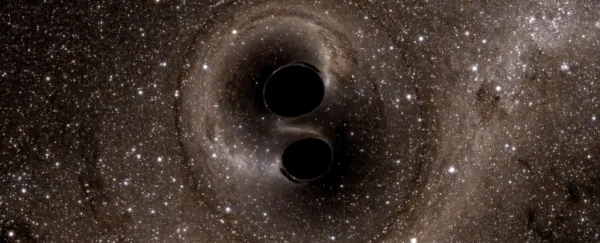
Black Hole Kicks
This is a brief overview of my black-hole mergers research from the Harvard-MIT Science Research Mentoring Program (SRMP) at the Center for Astrophysics (2019-2020). Thank you to Harvard & Smithsonian (CfA), MIT, and my mentor Dr. Carl Rodriguez.
Abstract from:
PRECESSION: Dynamics of spinning black-hole binaries with python
We present the numerical code PRECESSION, a new open-source Python module to study the dynamics of precession black-hole binaries in the post-Newtonian regime. The code provides a comprehensive toolbox to (i) study the evolution of the black-hole spins along their precession cycles, (ii) perform gravitational-wave-driven binary inspirals using both orbit-averaged and precession-averaged integrations, and (iii) predict the properties of the merger remnant through fitting formulas obtained from numerical-relativity simulations. PRECESSION is a ready-to-use tool to add the black-hole spin dynamics to larger-scale numerical studies such as gravitational-wave parameter estimation codes, population synthesis models to predict gravitational-wave event rates, galaxy merger trees and cosmological simulations of structure formation. PRECESSION provides fast and reliable integration methods to propagate statistical samples of black-hole binaries from/to large separations where they form to/from small separations where they become detectable, thus linking gravitational-wave observations of spinning black-hole binaries of their astrophysical formation history. The code is also a useful tool to compute initial parameters for numerical-relativity simulations targeting specific precessing systems. PRECESSION can be installed from the PYTHON Package Index, and it is freely distributed under version control on GITHUB, where further documentation is provided.
Supplementary Material
What are black-hole mergers?
- Binary black holes are two black holes orbiting each other.
- A binary black hole eventually merges into a single black hole due to gravitational waves.
- These gravitational waves were first detected in 2015 by LIGO (Laser Interferometer Gravitational-wave Observatory)
- LIGO gives properties of black holes by analyzing the gravitational waves from the mergers.
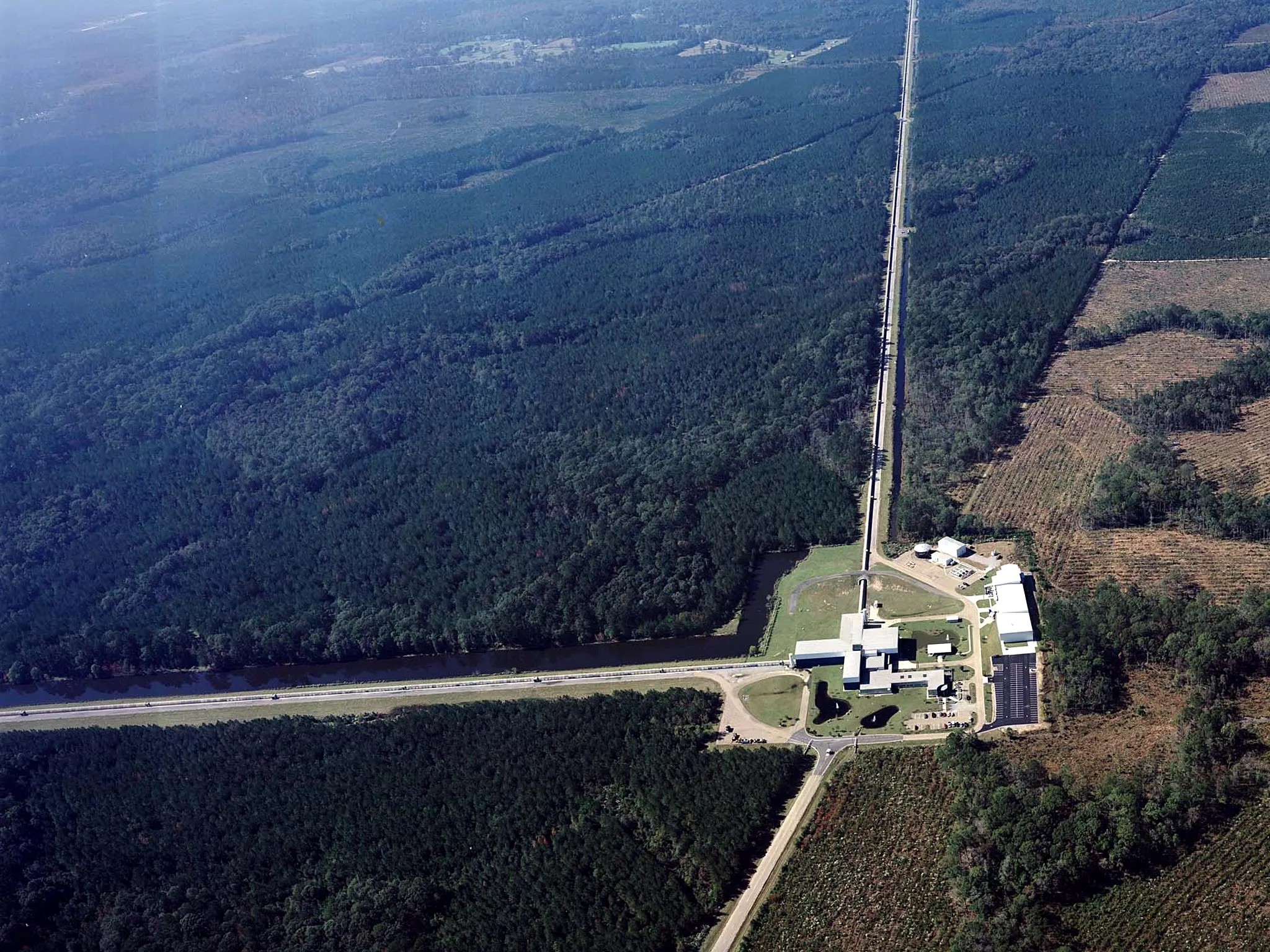 LIGO @ Livingston, Louisiana
LIGO @ Livingston, Louisiana
Black Hole Mergers and Gravitational Waves
- We can measure the masses and spins of the black holes before merger from the gravitational waves.
- If the two black holes are spinning, or have different masses, the gravitational wave they emit are a “rocket” that propels the new black hole in one direction.
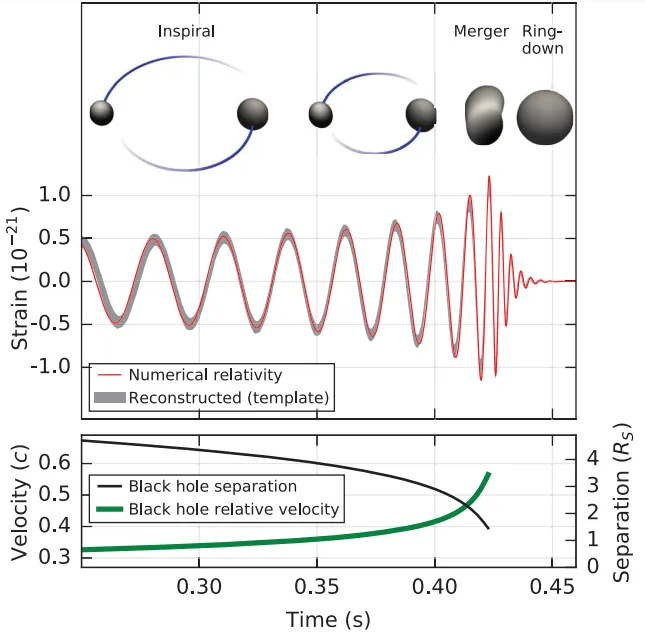 Calculated waveform from GW150914 (the first observation of a binary black hole merger)
Calculated waveform from GW150914 (the first observation of a binary black hole merger)
Black Hole Mergers in Globular Clusters
- Studying black hole mergers in globular clusters - where there are many other black holes.
- Escaping a globular cluster requires a certain escape velocity.
- Kick velocity > escape velocity
- Black hole is ejected out of cluster
- Kick velocity ≤ escape velocity
- Black hole stays in the cluster and has the chance to merge again
The Project
Goal: Build a simulation to determine a correlation between the birth spin of a black hole and the chances of it merging.
Kick Velocity
The magnitude of the kick velocity can be modeled as follows:
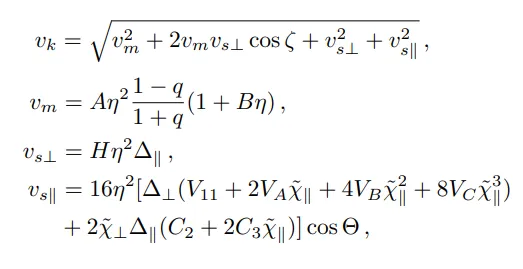
Kick Velocity Distributions:
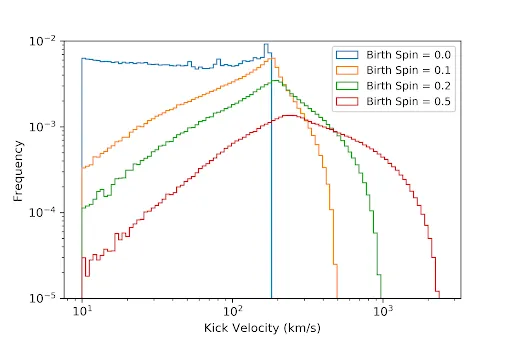
Final Spin
The expression for dimensionless spin (finalspin):
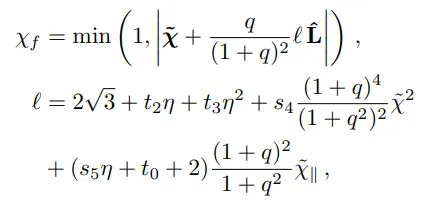 Final Spin Distributions:
Final Spin Distributions:

Kick Velocity & Final Spin Comparison
 Birth spin 0, Escape speed = 200km/s
Birth spin 0, Escape speed = 200km/s
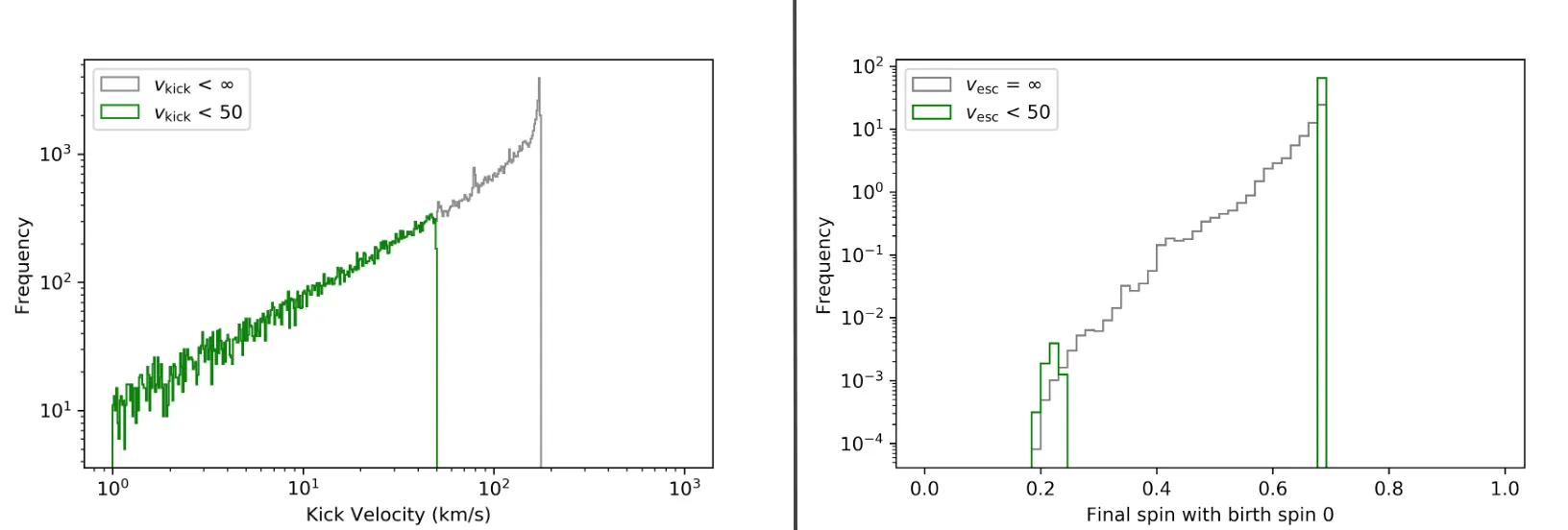 Birth spin 0, Escape speed = 50km/s
Birth spin 0, Escape speed = 50km/s
 Birth spin 0, Escape speed = 10km/s
Birth spin 0, Escape speed = 10km/s
Distribution of Final spins from birth spin
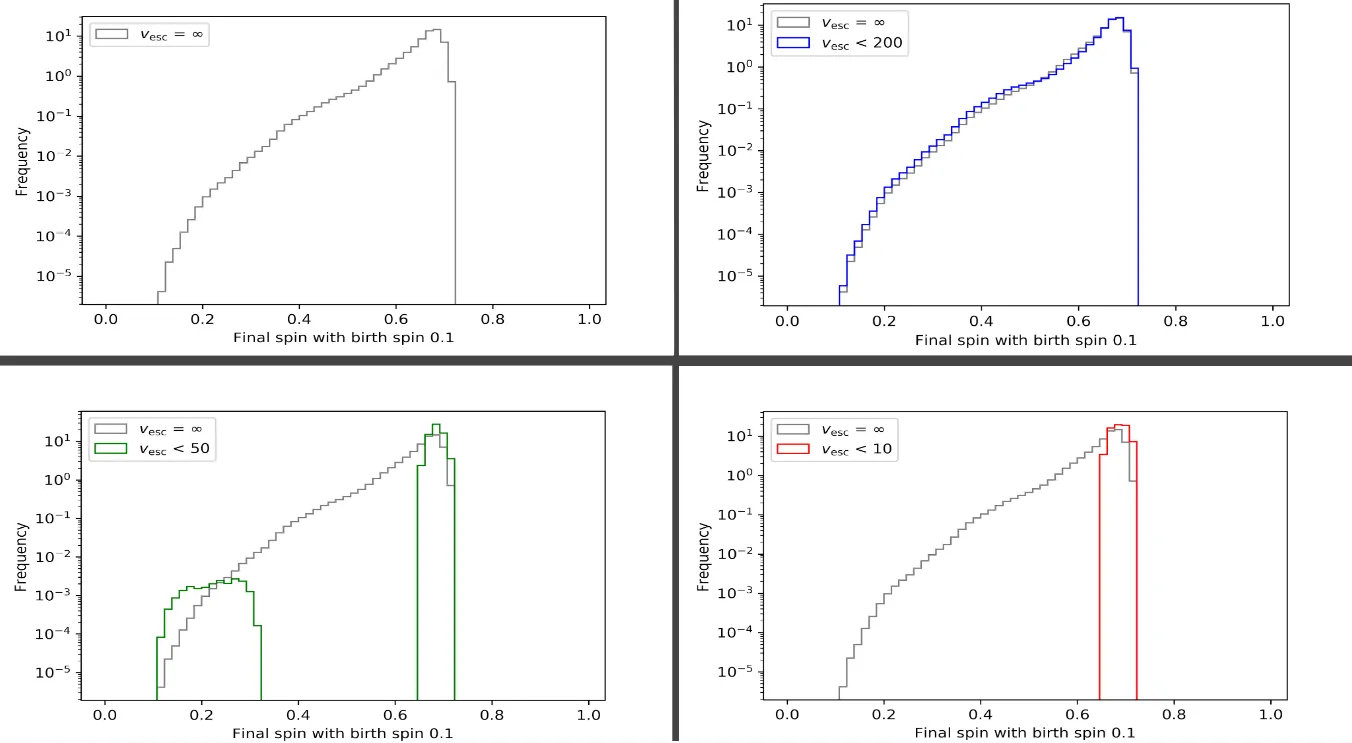 Birth spin = 0.1
Birth spin = 0.1
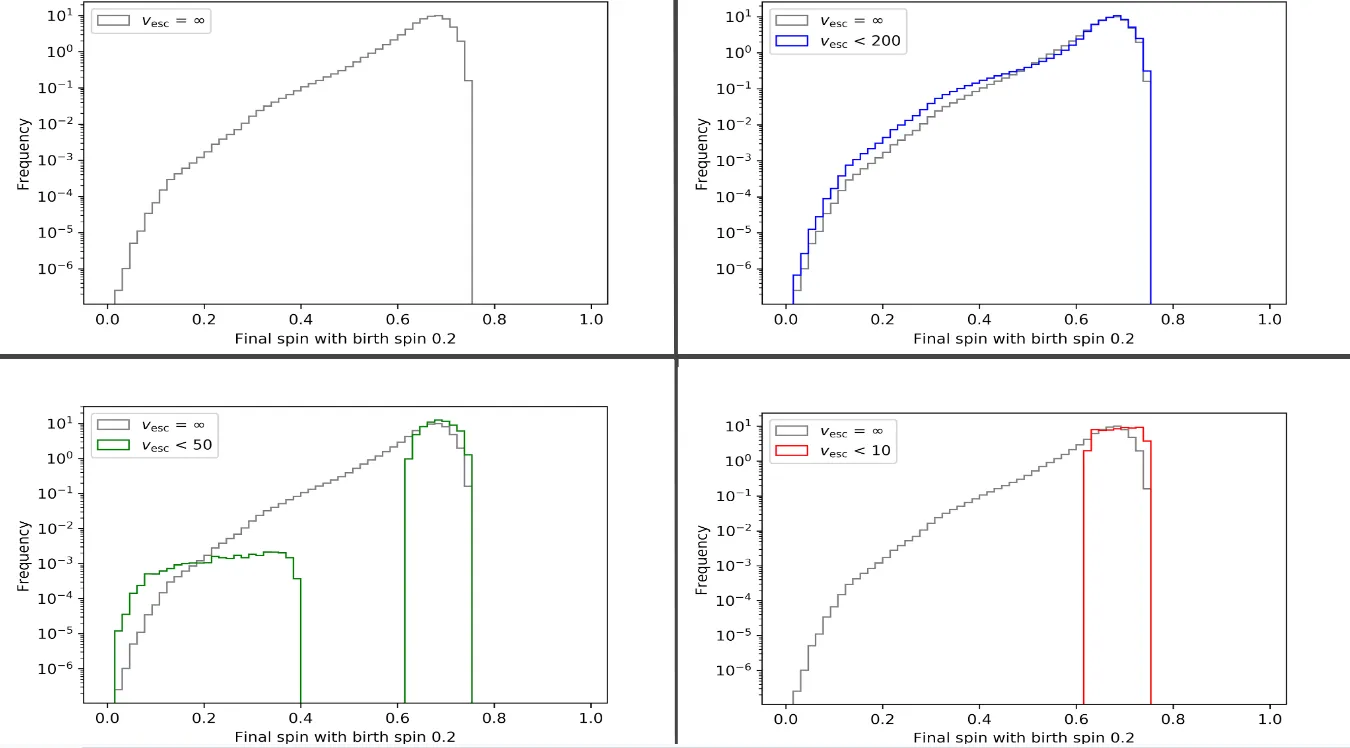 Birth spin = 0.2
Birth spin = 0.2
Conclusion
- Only binaries with sufficiently small birth spins and mass ratios stay in the clusters.
- Higher birth spin results in more higher kick velocities.
- Merged black holes with lower kick velocities that stay in the cluster tend to have higher final spins.
- The distribution of the final spins depends on the size of the clusters that they are born in.